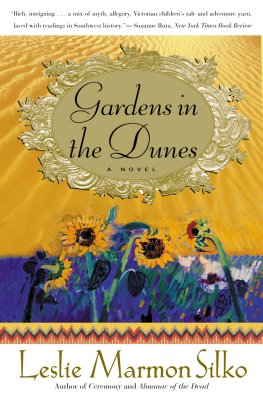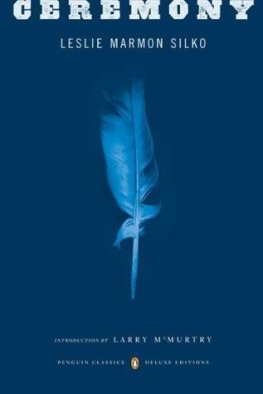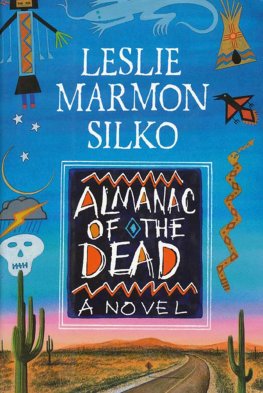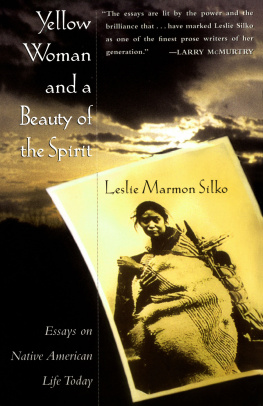Leslie Marmon Silko
Gardens in the Dunes
Special thanks to:
Robert and Caz, for all the love and patience
Larry McMurtry, for all the books and encouragement
Laura Coltelli, for the gardens and all the postcards

For Wendy and Gigi
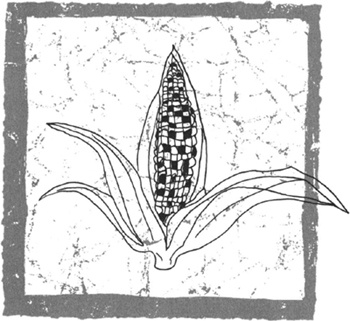

SISTER SALT called her to come outside. The rain smelled heavenly. All over the sand dunes, datura blossoms round and white as moons breathed their fragrance of magic. Indigo came up from the pit house into the heat; the ground under her bare feet was still warm, but the rain in the breeze felt cool so cool and refreshing on her face. She took a deep breath and ran up the dune, where Sister Salt was naked in the rain. She pulled the ragged sack over her head and felt the rain and wind so cool, so fragrant all over her body. Off in the distance there was a faint rumble of thunder, and the wind stirred; the raindrops were larger now. She tilted back her head and opened her mouth wide the way Sister Salt did. The rain she swallowed tasted like the wind. She ran, leaped in the air, and rolled on the warm sand over and over, it was so wonderful. She took handfuls of sand and poured them over her legs and over her stomach and shoulders the raindrops were cold now and the warmth of the sand felt delicious. Sister Salt laughed wildly as she came rolling down from the highest point of the dune, so Indigo ran after her and leaped and rolled too, her eyes closed tight against the sand. Over and over down-down-down effortlessly, the ease of the motion and the sensation of the warm sand and the cool rain were intoxicating. Indigo squealed with laughter as she rolled into Sister Salt, who was helpless with laughter, and they laughed and laughed and rolled around, one girl on top of the other. They lay side by side with their mouths open and swallowed raindrops until the storm passed. All around them were old garden terraces in the dunes.
Sister Salt remembers everything. The morning the soldiers and the Indian police came to arrest the Messiah, Grandma Fleet told Sister Salt to run. Run! Run get your little sister! You girls go back to the old gardens! Sister Salt was big and strong. She carried Indigo piggyback whenever her little sister got tired. Indigo doesnt remember much about that morning except for the shouts and screams.
Indigo remembers they used to sell baskets at the depot in Needles while their mother washed linens in tubs of boiling water behind the hotel; Grandma Fleet searched the town dump for valuables and discarded seeds. They slept in a lean-to made of old crates and tin, near the river. They learned to talk English while selling baskets to tourists at the train station.
Now, at the old gardens, the girls live alone in Grandma Fleets house. Grandma had returned a day after they did. Grandma saw Mama escape and run north with the other dancers ahead of the Indian police, who grabbed all the Indians they could, while the soldiers arrested the white people, mostly Mormons, who came to dance for the Messiah. The United States government was afraid of the Messiahs dance.
The deep sand held precious moisture from runoff that nurtured the plants; along the sandstone cliffs above the dunes, dampness seeped out of cracks in the cliff. Amaranth grew profusely at the foot of the dunes. When there was nothing else to eat, there was amaranth; every morning and every night Sister Salt boiled up amaranth greens just like Grandma Fleet taught her.
Later, as the amaranth went to seed, they took turns kneeling at the grinding stone, then Sister Salt made tortillas. They shared part of a honeycomb Indigo spotted in a crevice not far from the spring. Indigo cried when the bees stung her but Sister Salt only rubbed her swollen arms and legs vigorously and laughed, saying it was good medicine a good cure for anything that might ail you. Grandma Fleet taught Sister Salt and Indigo all about such things.
After the rains, they tended the plants that sprouted out of the deep sand; they each had plants they cared for as if the plants were babies. Grandma Fleet had taught them this too. The plants listen, she told them. Always greet each plant respectfully. Dont argue or fight around the plants hard feelings cause the plants to wither. The pumpkins and squash sent out bright green runners with huge round leaves to shade the ground, while their wiry green-yellow tendrils attached themselves to nearby weed stalks and tall dune grass. The big orange pumpkin blossoms were delicious right from the vine; bush beans sprang up in the shade of the big pumpkin leaves.
Grandma Fleet told them the old gardens had always been there. The old-time people found the gardens already growing, planted by the Sand Lizard, a relative of Grandfather Snake, who invited his niece to settle there and cultivate her seeds. Sand Lizard warned her children to share: Dont be greedy. The first ripe fruit of each harvest belongs to the spirits of our beloved ancestors, who come to us as rain; the second ripe fruit should go to the birds and wild animals, in gratitude for their restraint in sparing the seeds and sprouts earlier in the season. Give the third ripe fruit to the bees, ants, mantises, and others who cared for the plants. A few choice pumpkins, squash, and bean plants were simply left on the sand beneath the mother plants to shrivel dry and return to the earth. Next season, after the arrival of the rain, beans, squash, and pumpkins sprouted up between the dry stalks and leaves of the previous year. Old Sand Lizard insisted her gardens be reseeded in that way because human beings are undependable; they might forget to plant at the right time or they might not be alive next year.
For years of little rain, Sand Lizard gave them amaranth and sunflowers; for times of drought she gave them succulent little roots and stems growing deep beneath the sand. The people called themselves Sand Lizards children; they lived there for a long time. As their numbers increased, some Sand Lizard people joined their relations who lived down along the big river, until gradually the old gardens were abandoned. From time to time, Grandma Fleet and others still visited their old houses to feed the ancestor spirits. In a time of emergency, the old gardens could be counted on for sanctuary.
The Sand Lizard people heard rumors about the aliens for years before they finally appeared. The reports were alarming, and the people had difficulty believing the bloodshed and cruelty attributed to the strangers. But the reports were true. At harvest, the aliens demanded and took everything. This happened long, long ago but the people never forgot the hunger and suffering of that first winter the invaders appeared. The invaders were dirty people who carried disease and fever. The Sand Lizard people knew it was time for them to head for the hills beyond the river, to return to the old gardens.
The Sand Lizard people fled just in time; later that year, a fever killed dozens of whites and almost all of the people who remained by the river. The people were starving as they approached the old gardens. From a distance they could see the slopes of the highest sand dunes, and they could hardly believe their eyes; the shoulders of the dunes were crisscrossed with bands of bright colors: bird green, moss green, grass green; blossom orange, blossom yellow, and blossom white. As they got closer, they walked through fields of sunflowers that surrounded the sandhills on all sides. Only a few Sand Lizard people were left, but they lived undisturbed at the old gardens for years, always ready to flee to the high mountains at the first sign of strangers.

